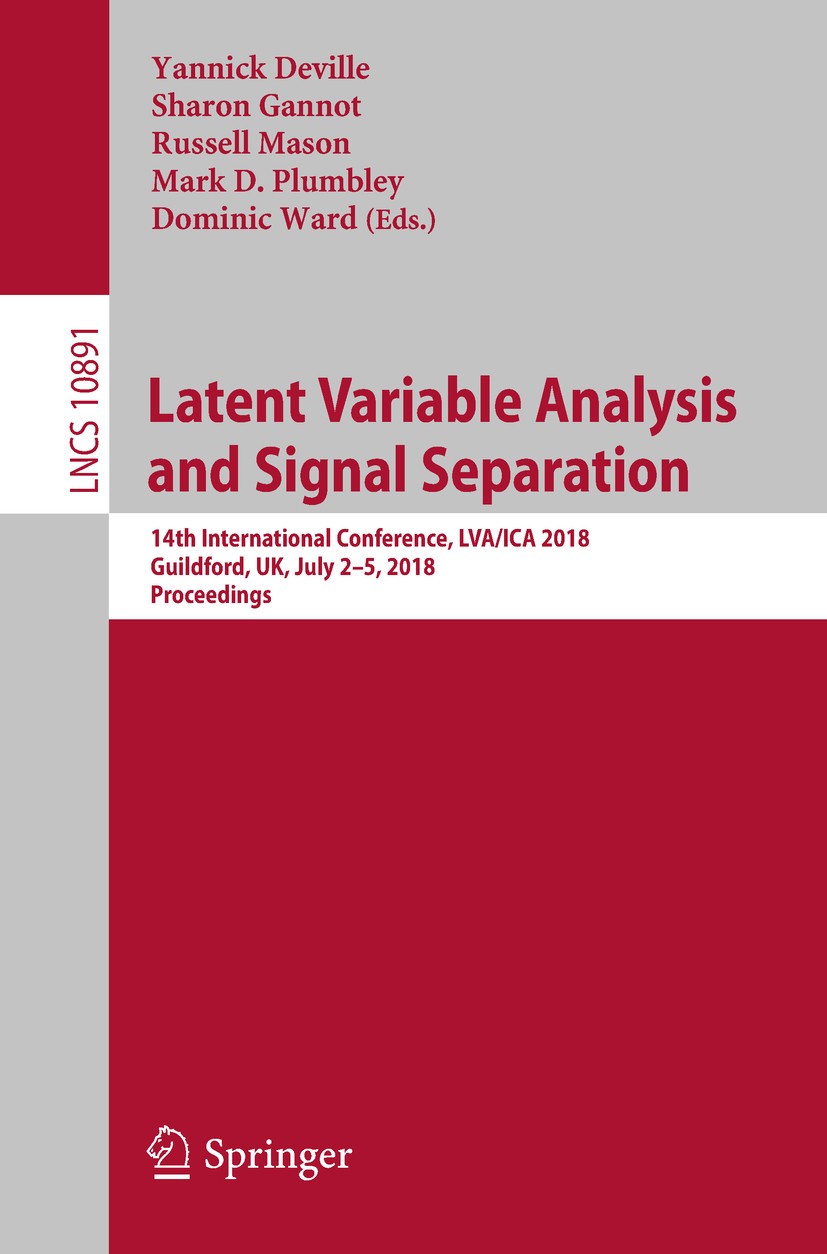| 书目名称 | Latent Variable Analysis and Signal Separation |
| 副标题 | 14th International C |
| 编辑 | Yannick Deville,Sharon Gannot,Dominic Ward |
| 视频video | http://file.papertrans.cn/582/581803/581803.mp4 |
| 丛书名称 | Lecture Notes in Computer Science |
| 图书封面 |  |
| 描述 | This book constitutes the proceedings of the 14th International Conference on Latent Variable Analysis and Signal Separation, LVA/ICA 2018, held in Guildford, UK, in July 2018..The 52 full papers were carefully reviewed and selected from 62 initial submissions. .As research topics the papers encompass a wide range of general mixtures of latent variables models but also theories and tools drawn from a great variety of disciplines such as structured tensor decompositions and applications; matrix and tensor factorizations; ICA methods; nonlinear mixtures; audio data and methods; signal separation evaluation campaign; deep learning and data-driven methods; advances in phase retrieval and applications; sparsity-related methods; and biomedical data and methods. |
| 出版日期 | Conference proceedings 2018 |
| 关键词 | Source separation; Non-negative matrix factorization; Audio; Biomedical signal processing; Matrix and te |
| 版次 | 1 |
| doi | https://doi.org/10.1007/978-3-319-93764-9 |
| isbn_softcover | 978-3-319-93763-2 |
| isbn_ebook | 978-3-319-93764-9Series ISSN 0302-9743 Series E-ISSN 1611-3349 |
| issn_series | 0302-9743 |
| copyright | Springer International Publishing AG, part of Springer Nature 2018 |
 |Archiver|手机版|小黑屋|
派博传思国际
( 京公网安备110108008328)
GMT+8, 2025-12-18 17:01
|Archiver|手机版|小黑屋|
派博传思国际
( 京公网安备110108008328)
GMT+8, 2025-12-18 17:01


